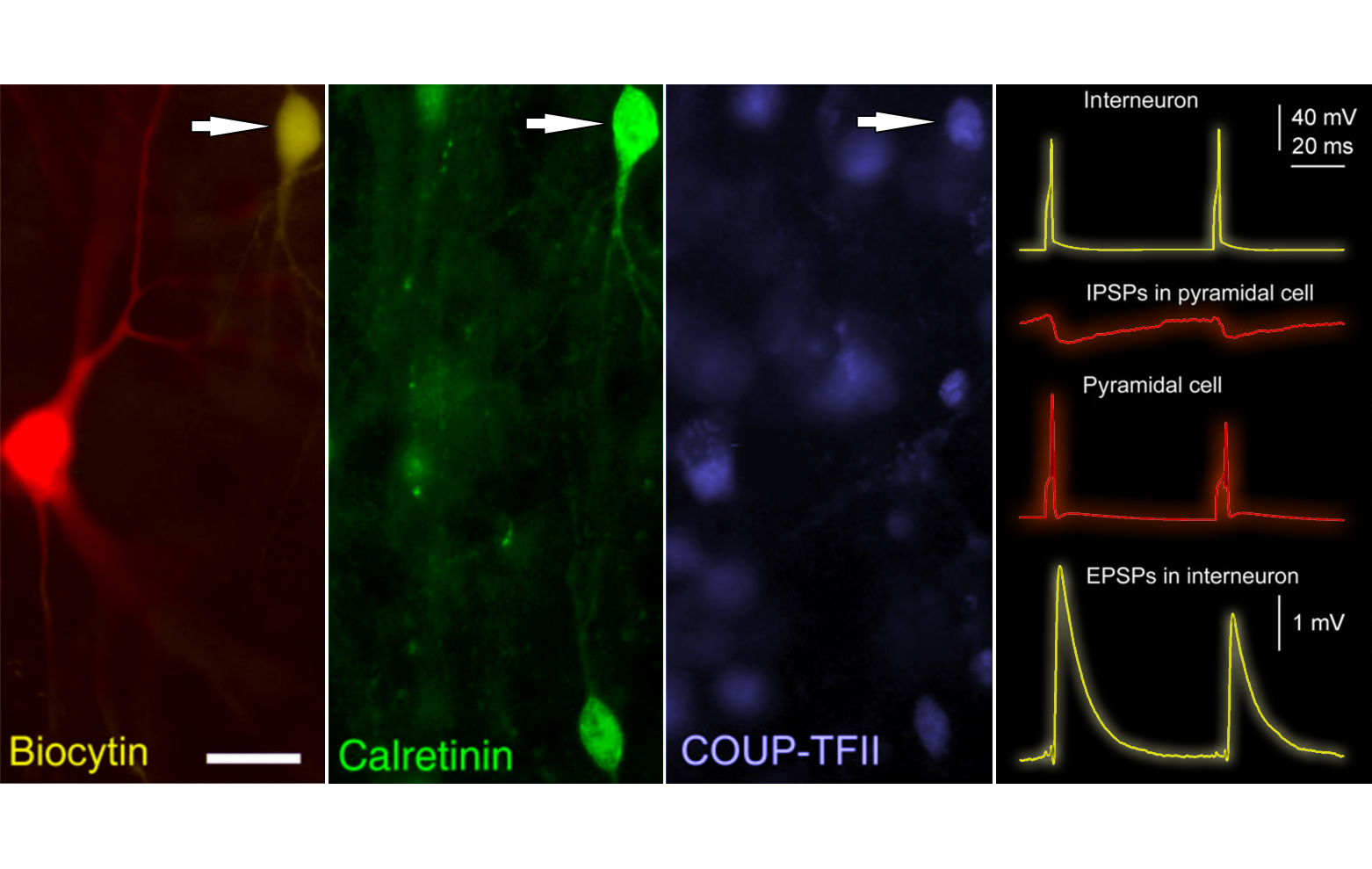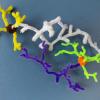Molecular and Electrophysiological Characterization of GABAergic Interneurons Expressing the Transcription Factor COUP-TFII in the Adult Human Temporal Cortex.
The cerebral cortex connects us to the world and stores learned information. The identity of neurons is controlled by transcription factors (TF). We show in live human cortical slices from patients that GABAergic neurons expressing the TF COUP-TFII use specific signalling molecules. They innervate pyramidal cells and each other, act through A-type receptors and receive input from pyramidal cells.
Transcription factors contribute to the differentiation of cortical neurons, orchestrate specific interneuronal circuits, and define synaptic relationships. We have investigated neurons expressing chicken ovalbumin upstream promoter transcription factor II (COUP-TFII), which plays a role in the migration of GABAergic neurons. Whole-cell, patch-clamp recording in vitro combined with colocalization of molecular cell markers in the adult cortex differentiates distinct interneurons. The majority of strongly COUP-TFII-expressing neurons were in layers I-III. Most calretinin (CR) and/or cholecystokinin- (CCK) and/or reelin-positive interneurons were also COUP-TFII-positive. CR-, CCK-, or reelin-positive neurons formed 80%, 20%, or 17% of COUP-TFII-positive interneurons, respectively. About half of COUP-TFII-/CCK-positive interneurons were CR-positive, a quarter of them reelin-positive, but none expressed both. Interneurons positive for COUP-TFII fired irregular, accommodating and adapting trains of action potentials (APs) and innervated mostly small dendritic shafts and rarely spines or somata. Paired recording showed that a calretinin-/COUP-TFII-positive interneuron elicited inhibitory postsynaptic potentials (IPSPs) in a reciprocally connected pyramidal cell. Calbindin, somatostatin, or parvalbumin-immunoreactive interneurons and most pyramidal cells express no immunohistochemically detectable COUP-TFII. In layers V and VI, some pyramidal cells expressed a low level of COUP-TFII in the nucleus. In conclusion, COUP-TFII is expressed in a diverse subset of GABAergic interneurons predominantly innervating small dendritic shafts originating from both interneurons and pyramidal cells.


